Guadeloupe, French West Indies, Lesser Antilles
Exotic Destination
Guadeloupe is as exotic as it can get. Positioned at the top of the Lesser Antilles, it is part of the French West Indies. It is now a major port of call for those who love cruising the waters of the Atlantic Ocean and Caribbean Sea. There are five main islands, and several smaller ones, making it a top getaway for those looking for plenty of sun, sand and sea. It can get cooler up in the mountains in Basse Terre too, so the choices are plenty. Our meaningful interactions with Guadeloupe Tourism’s deputy president, Mr Hilaire Brudey, its director general, Mr Willy Rosier, and its head of public relations, Mr Guy-Claude Germain, indicated that Guadeloupe is ready for the high-end Indian traveler that’s looking to have a quiet time out in the Caribbean. In this section, find some snapshots of the islands along with pictures of this exotic destination
|
|
|
|
|
DISCOVER THE ARCHIPELAGO...
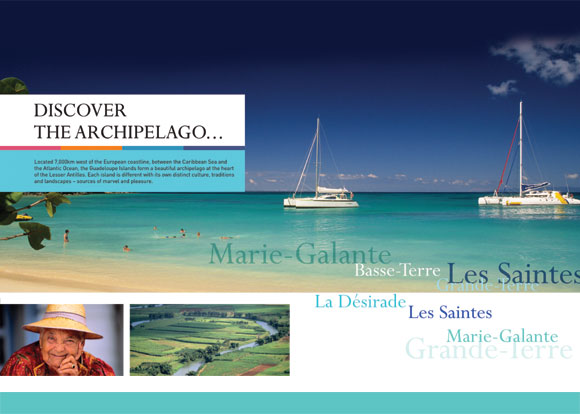
Located 7,000km west of the European coastline, between
the Caribbean Sea and the Atlantic Ocean, the Guadeloupe
Islands form a beautiful archipelago at the heart of the
Lesser Antilles. Each island is different with its own
distinct culture, traditions and landscapes – sources of
marvel and pleasure
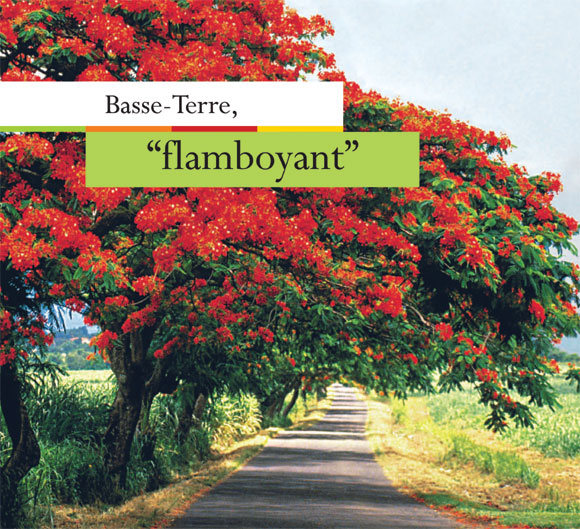
Basse-Terre is set on a volcano range topped by la Soufrière at the heart of dense tropical vegetation. A mountainous massif covered by a 17,000-hectare rainforest managed by the National Park, it features many waymarked footpaths. With waterfalls, cascades, lakes, parks and lush vegetation, Basse-Terre has a wealth of natural charm.
It is also bordered by pebbled and sandy beaches in shades of ochre, brown, black and pink as well as a world-famous underwater nature reserve, the Commandant Cousteau Reserve, situated in Pigeon, Bouillante.
Basse-Terre features many remnants of the island’s cultural diversity: A Catholic church, Hindu temple, archaeological remains of the first inhabitants and a military fort from the 17th century.
Major sites include:
- The National Park, France’s 7th largest National Park
- The Pigeon Islets and the Cousteau Reserve in Bouillante
- The spectacular Carbet Falls and their source in
Capesterre-Belle-Eau
- The Cascade aux Écrevisses waterfall on the Route de la Traversée
- Grande-Anse beach in Deshaies
- La Soufrière volcano in Saint-Claude, the highest summit in the Lesser Antilles
- The Grand-Cul-de-Sac Marin nature reserve dotted with islets between Basse-Terre and Grande-Terre
- The town of Basse-Terre, classed as a “Town of Art and History”, with its historic districts and the famous Fort Delgrès
- The embroidery and textile arts centre in Vieux-Fort
- La Grivelière Plantation in Vieux-Habitants, a former residence and 18th-century plantation famous for its coffee and cocoa
- The Engraved Rocks Archaeological Park in Trois-Rivières
|
|
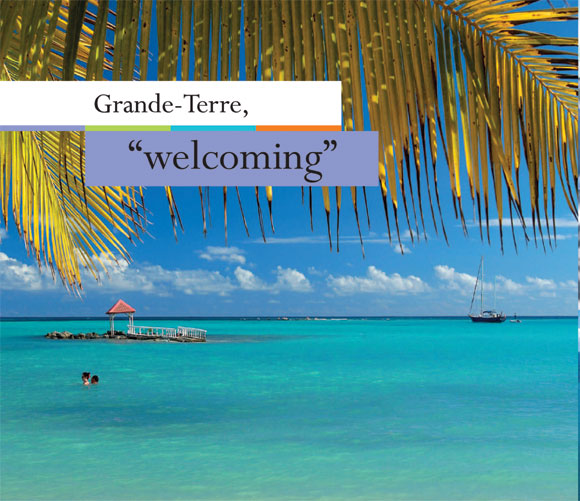
 Grande-Terre is set on a vast limestone plateau bordered by perfect beaches, turquoise lagoons and unforgettable landscapes. This plateau is ideally suited to sugar cane plantations, which cover most of the island.
Grande-Terre is set on a vast limestone plateau bordered by perfect beaches, turquoise lagoons and unforgettable landscapes. This plateau is ideally suited to sugar cane plantations, which cover most of the island.
It has many restaurants and hotels which serve traditional Creole dishes and is famous for its warm Caribbean nights.
Major sites include:
- Basilica of St Peter and St Paul, Pointe-à-Pitre
- Fort Fleur d’Épée on the heights of Gosier
- The Schoelcher Museum, dedicated to the man who instigated the decree abolishing slavery, in Pointe-à-Pitre
- The islet of L’îlet du Gosier which boasts new features such as a marked scuba diving trail, where visitors can set off in search of tropical underwater flora and fauna
- The 18-hole international golf course in Saint-François with its exceptional seaside location which has recently reopened following major renovation work
- Pointe-des-Châteaux, recognised as a unique area for biodiversity and archaeological riches. The site has been named as a “Grand Site de France”
- The Canal des Rotours, an unusual and well-kept secret, in the privacy of the mangrove at Morne-à-l’Eau
- Beauport – An old sugar factory in the sugar cane region of Port-Louis. Today it is a Technical and Industrial Centre for Scientific Culture with a park explaining the sugar cane trade and Guadeloupe’s history as a sugar producer, featuring a tourist train
- The cemetery at Morne-à-l’Eau, in an amphitheatre, with its black and white checkerboard vaults
- Pointe de la Grande Vigie and Porte d’Enfer, with its huge cliffs and unforgettable views.
|
|
|
|
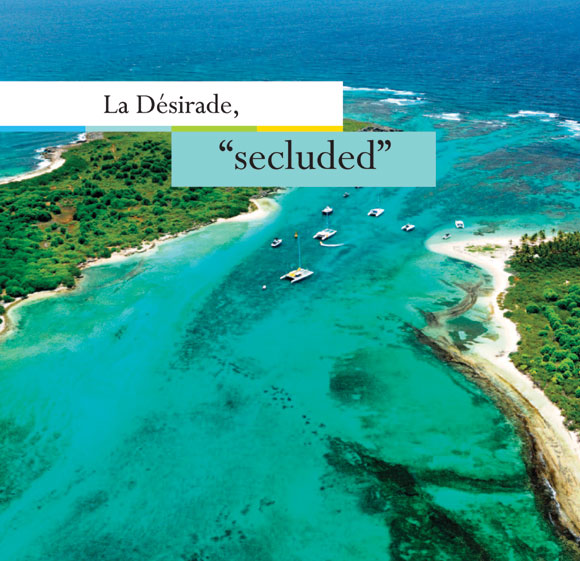
 Accessible by sea (45 min from Saint-François) or air (15 min from Pointe-à-Pitre International Airport), La Désirade can be explored on foot, by bike or scooter, along its one main road. A haven of peace, the island stretches over a rocky plateau 11km in length. Its warm and welcoming inhabitants and magnificent white sandy beaches protected by long coral reefs make it the perfect place for swimming, diving and walking enthusiasts. Accessible by sea (45 min from Saint-François) or air (15 min from Pointe-à-Pitre International Airport), La Désirade can be explored on foot, by bike or scooter, along its one main road. A haven of peace, the island stretches over a rocky plateau 11km in length. Its warm and welcoming inhabitants and magnificent white sandy beaches protected by long coral reefs make it the perfect place for swimming, diving and walking enthusiasts.
La Désirade is now one of the French national nature reserves. It is the second largest site in Guadeloupe listed in the official government register, the sixth largest in the French overseas territories, and the largest geological nature reserve. This classification has boosted eco-tourism in Guadeloupe, which has been booming since 2009 with the signing of a Charter for sustainable development (wind farm built in 1993).
Major sites include:
- Petite-Rivière beach, ideal for scuba diving
- The Morne du Souffleur, a 1-hour walk to the top which offers a superb view
- Beauséjour beach with its long stretch of fine sand
- The ruins of a former leprosy hospital and former cotton mill
- The Petite-Terre islands, listed as a nature reserve since 1998. The islands boast remarkable biological diversity due to their modest surface area, on which is juxtaposed a variety of environments such as forest vegetation, salt marshes, sandy beaches, rocky coasts, lagoons, coral reefs and abundant marine life.
|
|
|
|
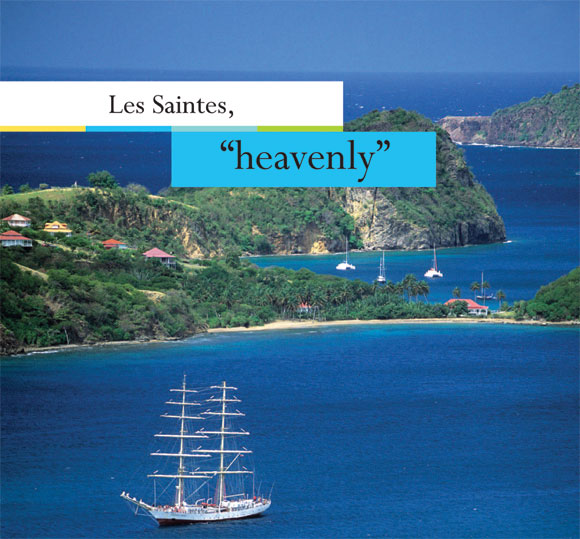
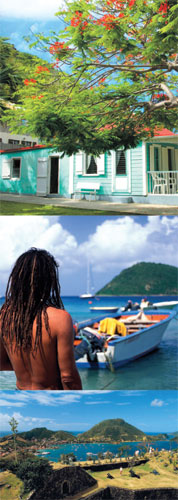 Les Saintes is an archipelago of two inhabited islands, Terre-de-Haut (5km2) and Terre-de-Bas (8km2), and seven islets. Les Saintes was originally inhabited by people from Brittany and Normandy. Fort Napoléon offers a superb panoramic view and a wall-walk transformed into a pleasant exotic garden.
Les Saintes is an archipelago of two inhabited islands, Terre-de-Haut (5km2) and Terre-de-Bas (8km2), and seven islets. Les Saintes was originally inhabited by people from Brittany and Normandy. Fort Napoléon offers a superb panoramic view and a wall-walk transformed into a pleasant exotic garden.
Terre-de-Haut
Les Saintes Bay on Terre-de-Haut is one of the most beautiful bays in the world. Terre-de-Haut is famous for its sugar loaf, colourful streets and the multicoloured boats and painted wooden huts of its fishermen. It is also famous for its “Tourments d’amour”, a tartlet that’s soft on the outside and crunchy on the inside with a coconut, banana or guava filling.
Major sites include:
- Pompierre beach
- Fort Napoléon and its museum tracing the history of Les Saintes
- Marigot Bay with its calm, shallow waters
- Anse Crawen beach for nature lovers
Terre-de-Bas
Terre-de-bas is best known for its artisan produce (Salako, the traditional hat of Les Saintes, West Indian bay tree essence, peyi liqueurs and cherry jam).
Major sites include:
- Remains of the former pottery
- The magnificent Grande-Anse beach
- The charming village of Petite-Anse
- Walks: The “Trace du Dessus de l’Etang” (lake walk) and “Trace du Dessus des Falaises” (clifftop walk).
|
|
|
|
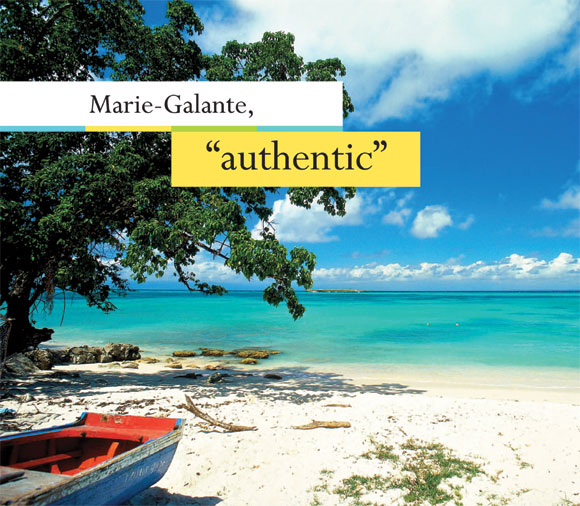
 With its highly protected nature and culture, Marie-Galante or the “Island of a hundred windmills” captivates visitors with its authenticity, protected beaches and
tranquillity.
With its highly protected nature and culture, Marie-Galante or the “Island of a hundred windmills” captivates visitors with its authenticity, protected beaches and
tranquillity.
With its round shape, Marie-Galante (also known as “la grande galette” or big cookie) is famous for the production and distillation of sugar cane (the island produces the best and strongest rum in Guadeloupe).
Consisting of three municipalities—Grand-Bourg, Capesterre and Saint-Louis - Marie-Galante has retained its old-world charm. Here it is still possible to come across oxcarts (once the only form of transport) and attend a cockfight or ox-pulling competition.
Its white sandy beaches exude an air of serenity.
Every year in June (during Pentecost weekend), Marie-Galante hosts the Terre de Blues festival, undoubtedly the biggest music event in the archipelago.
Local specialities include the bébélé, a traditional dish made of tripe and green banana, and the chaudage, a local beef stew.
Major sites include:
- Le Château Murat, a former sugar plantation
- La Feuillère beach
- Notre-Dame church
- The Bézard Windmill, the only one in full working condition today
- The Bellevue, Bielle and Poisson distilleries (and its famous Père Labat rum)
- Anse-Canot beach, a small creek between two hillocks
|
|
|
|
June 2013
|
|


|
|
|
|